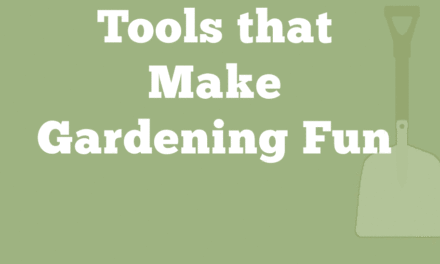Mulch – Nature’s Way of Recycling
One of the chores that befall every gardener, often several times a year, is the laborious task of mulching. While many of us view this as an odious task best ranked with mucking stables or raking leaves (I rank these two very closely), I view this mission as my way of helping Mother Nature herself improve my garden.
In my mind there is no better way to change the soil in your garden than mulching; not raining fertilizer and chemicals upon it, not amending soil, and no, especially not plowing, tilling, or cultivating. Mulching is the finest thing you can do for a garden bed and I will use the rest of this space to put to rest any doubts you may have as to the veracity of that statement.
Let’s take the first point; fertilizing and chemicals. While fertilizers do offer nutrients to the plants in a readily available form, the tendency of most Americans is to reach for the blue stuff (I won’t mention a specific brand, but I think we all know what we’re talking about here). That blue stuff (and most of the fertilizers available today) rely on water soluble nitrogen as their primary ingredient, and that is not a very good thing for our garden or the environment.
The problem with water soluble nitrogen is that it’s water soluble; sure, it makes it real easy to put on, but the next rain washes whatever didn’t make it into a plant right out of the root zone and into the water table. Bad for our garden (no more food), bad for the water table (too much food).
The worst water pollution problem in the U.S. stopped being industrial pollution long ago, suburban run-off is the big culprit in settled areas and agricultural run-off is the big offender in rural areas and water-soluble nitrogen is a leading cause in both cases. Fertilizing organically is a great way to cut down on water pollution and create a healthier garden, and mulching is a great way to do just that (more in a moment).
Let’s take the next two points together; soil amendments and tilling. First of all, any time you break up the soil, you begin to break it into smaller and smaller pieces. Done repeatedly, you eventually break that soil into dust, so the only thing holding the soil together is cohesion (water clinging to water); take that away and the dust heads east (or wherever the wind is blowing). Just ask the folks in Oklahoma how that worked out; the soil profile in their neck of the woods still hasn’t fully recovered from the Dustbowl of the Thirties! But (as some might reply) we can add peat or humus to the soil as we till. Sure you can. But now we’ve created another soil interface for the plants roots to negotiate (a soil interface is any abrupt change in soil structure; i.e., the difference between the soil in the container you are planting and the soil it is being planted in). Roots don’t like to move between soil interfaces, so now that we’ve created one interface between the pot and the ground, lets not create another between the ground we plant in and the soil 9 inches below it (average depth a roto-tiller works in those amendments). So tilling in those amendments won’t work…
The trick here is to incorporate organic content (because it won’t wash out) into the soil in a manner that doesn’t break up the soil or create new soil interfaces. That trick is easily accomplished by, you guessed it, mulching. As if that wasn’t reason enough, mulch also helps retain soil by reducing run-off, retains water by creating a moisture barrier for the soil, creates optimal growing situations for roots by keeping soil temps down (not many plants grow above 80 degrees, top or bottom), and most importantly for many of us, adds that finishing touch to the bed or border (we’ve taken to referring to mulching as “frosting the cake” around our household; a very apt description we think).
There are good mulches and bad ones and a bad mulch can do far more damage than good, so let’s look at some of the alternatives and assess what might be the best choice for your garden. First let’s look at what might be lying around the yard. One of my favorite mulches is compost, that organic gem you can cook up yourself by chopping up all the leaves and grass clippings and kitchen waste (NO meat or fats!) and tumbling them around for a couple months and voila! Instant soil! The down side to mulching with compost is that it’s such good soil that weeds fall in love the instant they hit it and grow quickly, and compost takes a long time to produce and you use it so quickly as a mulch. Good stuff, but save it for the roses and the better veggies.
Next on my list is bark mulch, and this is the stuff the grand majority of us use and with good reason. It’s reasonably cheap, readily available, and we’re pretty used to seeing it around. Another good point is the fairly quick turnover time from mulch to soil. Now many of you out there are shaking your head. “Scott, you big dummy, if it turns over quicker that means I have to mulch more often! That’s why I buy the nuggets!” Yet what’s left of the nuggets in a years time looks so ratty that you end up buying more and putting them on; the only difference between your garden and mine is I’ve gained another inch of rich organic matter and I’ve hauled a few more wheelbarrows than you.
The price of those nuggets is more expensive than my bulk bark so we end up spending the same amount and I get better coverage. That’s if your paying for the bulk mulch at all; I get it for free at the town transfer station where my town accepts garden waste, tub grinds it and puts it in a big pile for us to take away for free! That used to be hundreds of dollars in a year for me; now I get it for my tax dollars and the town retains soil by keeping it at home. I love win-win stuff like that! Some barks are better than others (more on that in a moment) and I get whatever people have thrown in the pile, but it’s also got a compost component (from the grass clippings and such), so I’m happy as a pig in … well, compost!
Some wood mulches are good, some not so, and some have little use as mulch. The worst offender of the bunch is one I see used all the time and I suspect is even more prevalent than I know; trail chips. You know the stuff that comes out of the business end of a wood chipper. It’s called trail chips by most folks ‘cuz that’s all its good for. The bark mulch is okay because it breaks down fairly easily. The heartwood needs to go through a few changes before it breaks down; these entail conversion by critters in the soil that actually use nitrogen for fuel.
So if we put trail chips in the garden, we’ve actually introduced an organism who will compete with our plants for food! Might as well throw grass seed in there too! Hardwood mulches suffer from much the same problem. Softwoods like pine, spruce and hemlock incorporate into the soil easily and add nutrients, so there’s the obvious choice in the wood category (although free is good, those wood chips from the tree guys come at a high but unseen price, as your plants dwindle away to nothing).
The stuff I like the least is the stuff y’all seem to like the best; the red “cedar” mulch, which is really ground up pine pallets dyed red; I occasionally run across the real deal, but it’s rare and expensive. This is heartwood with all the attendant problems and what’s more, when the color starts to fade, you put on another layer. And the next year another. And another.
I’ve been called in to find out why a garden is going south and found four and five layers on top of each other like rings on a tree. No water penetrates, the heartwood uses up the available nitrogen, and the plants croak. I don’t care how cheap it is or what color they dye it (those colors compete with the plants!), you are doing yourself no good by using this stuff. Mulches that incorporate help the soil and plants. Ones that don’t hurt it. Period.
There are other mulches that I am seeing more and more availability on. Buckwheat hulls seem to be catching on; I am leery of the anti-fungal properties it possesses as it could hurt healthy soil flora (and they blow around too easily). Cocoa mulch is a fantastic organic component; too good really as it will grow those healthy soil fungi I was just talking about on top of the mulch (a tad unsightly, but I still buy them to add to my bonsai soil and to throw into my compost; good stuff!). I can’t say I’ve tried the licorice root yet, but I hear good things. There are rubber mulches and stone mulches, but these do nothing to help your soil and will eventually fill up with organic content, and then what? You have to remove everything and start over. And you thought organic mulch was too much work?
Just remember all the good and bad that mulch can do, and find the one that you like and that works for you (I know a mulch is working for me when the worms start getting more populous and stronger; a sure sign). In a few years your soil will start to get as black as night and the worms will do all the tilling you need. All will be well in the garden. So get out there and frost the cake (you’ll be glad you did).



